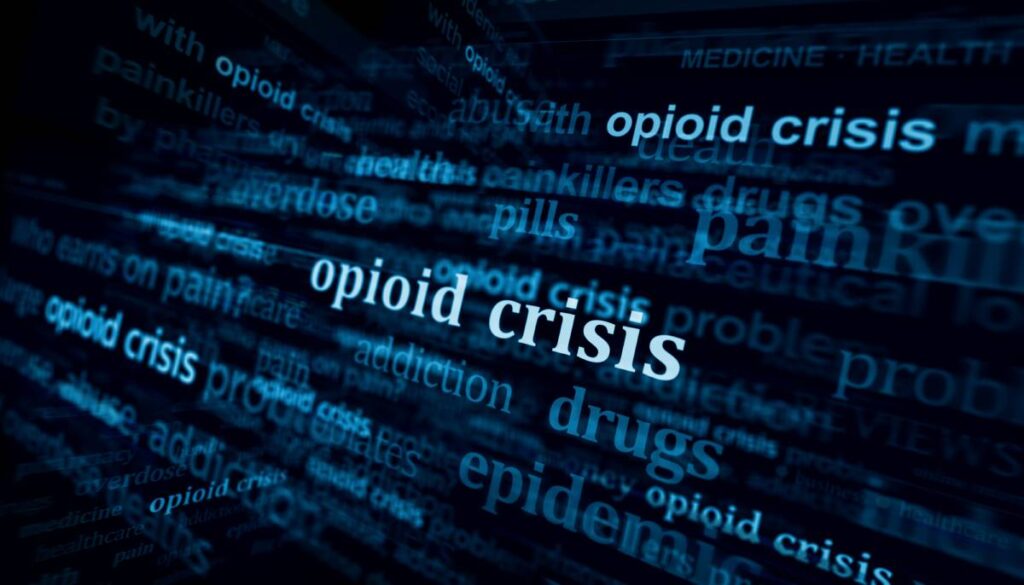Over the past decade, the opioid crisis has emerged as one of the most devastating public health challenges in the United States. Despite the ongoing severity of the opioid epidemic, however, recent developments in public health strategies, pharmaceutical oversight, and harm reduction programs are yielding measurable progress in curbing the impact of the crisis.
Significant progress has been made in fighting the opioid crisis with a growing shift from a punitive to a public health-centered approach. Recognizing opioid use disorder as a chronic medical condition rather than a moral failing has catalyzed the expansion of treatment programs. An integrated public health approach has been increasingly adopted, medication-assisted treatment is now considered the gold standard, and accessibility has improved significantly, with more clinics offering low-barrier entry and telehealth platforms expanding reach into rural and underserved communities 1–4.
Federal and state governments have also taken very concrete steps to regulate the supply of prescription opioids. The implementation of Prescription Drug Monitoring Programs (PDMPs) has helped flag high-risk prescribing and patient behaviors, prompting early interventions. Many states have adopted stricter regulations for opioid prescribing, encouraging non-opioid alternatives for pain management and requiring additional training for providers. As a result, opioid prescribing rates have dropped significantly since their peak in 2012 5–7.
In addition to reducing supply and expanding treatment, harm reduction strategies are playing a crucial role in saving lives. The widespread distribution of naloxone, a medication that rapidly reverses opioid overdoses, has led to thousands of overdose reversals. States and nonprofit organizations have trained law enforcement, educators, and even the general public in its administration, making naloxone a staple of community health. Supervised consumption sites, although controversial, continue to gain momentum in some regions, offering safer environments for drug use while connecting individuals to health services 8,9.
Recent advances in data collection and analysis have also contributed to national progress in fighting the opioid crisis. Real-time overdose surveillance systems enable local health departments to identify hotspots and allocate resources efficiently. In addition, the integration of opioid use disorder screening into primary care and emergency departments has helped identify at-risk individuals earlier in the cycle of addiction 10–12.
Pharmaceutical companies have been subject to significant scrutiny and legal pressure, with lawsuits resulting in multi-billion-dollar settlements. Funds from these settlements are being channeled into treatment, prevention, and education programs. While critics argue about the speed and transparency of fund distribution, this influx of resources represents an opportunity to rebuild public health infrastructure and address the social determinants of addiction 13,14.
Despite these advances, challenges remain. However, the shift toward science-based policies and community-driven initiatives marks a hopeful evolution in the national response to the opioid epidemic. Continued investment, political will, and compassion will be essential to sustain this momentum and save more lives.
References
1. Saloner, B. et al. A Public Health Strategy for the Opioid Crisis. Public Health Rep 133, 24S-34S (2018). DOI: 10.1177/0033354918793627
2. Blanco, C., Wiley, T. R. A., Lloyd, J. J., Lopez, M. F. & Volkow, N. D. America’s opioid crisis: the need for an integrated public health approach. Transl Psychiatry 10, 1–13 (2020). DOI: 10.1038/s41398-020-0847-1
3. Zai, X. Beyond the brink: Unraveling the opioid crisis and its profound impacts. Economics & Human Biology 53, 101379 (2024). DOI: 10.1016/j.ehb.2024.101379
4. Substance Abuse and Mental Health Services Administration (US) & Office of the Surgeon General (US). Facing Addiction in America: The Surgeon General’s Spotlight on Opioids. (US Department of Health and Human Services, Washington (DC), 2018).
5. Alogaili, F., Abdul Ghani, N. & Ahmad Kharman Shah, N. Prescription drug monitoring programs in the US: A systematic literature review on its strength and weakness. Journal of Infection and Public Health 13, 1456–1461 (2020). DOI: 10.1016/j.jiph.2020.06.035
6. CDC. Prescription Drug Monitoring Programs (PDMPs). Overdose Prevention https://www.cdc.gov/overdose-prevention/hcp/clinical-guidance/prescription-drug-monitoring-programs.html (2024).
7. Smith, N. Z. Y., Thornton, J. D., Fenton, S. H., Simmons, D. & Champagne-Langabeer, T. Helpful, Unnecessary, or Harmful: A Systematic Review of the Effects of Prescription Drug Monitoring Program Use on Opioid Prescriptions. Pharmacoepidemiology 2, 350–365 (2023). DOI: 10.3390/pharma2040030
8. Fischer, L. S. et al. Effectiveness of naloxone distribution in community settings to reduce opioid overdose deaths among people who use drugs: a systematic review and meta-analysis. BMC Public Health 25, 1135 (2025). DOI: 10.1186/s12889-025-22210-8
9. Abuse, N. I. on D. Naloxone DrugFacts | National Institute on Drug Abuse (NIDA). https://nida.nih.gov/publications/drugfacts/naloxone (2022).
10. Blanco, C., Wall, M. M. & Olfson, M. Data needs and models for the opioid epidemic. Mol Psychiatry 27, 787–792 (2022). DOI: 10.1038/s41380-021-01356-y
11. Research, Data, and Metrics Working Group Research Agenda – NAM. https://nam.edu/product/research-data-and-metrics-working-group-research-agenda/ (2021).
12. Bharat, C., Hickman, M., Barbieri, S. & Degenhardt, L. Big data and predictive modelling for the opioid crisis: existing research and future potential. The Lancet Digital Health 3, e397–e407 (2021). DOI: 10.1016/S2589-7500(21)00058-3
13. Healey-Driscoll Administration awards $1.5 million to 30 municipalities and organizations to address the opioid crisis | Mass.gov. https://www.mass.gov/news/healey-driscoll-administration-awards-15-million-to-30-municipalities-and-organizations-to-address-the-opioid-crisis. (2025).
14. Florida Opioid Settlement | Florida DCF. https://www.myflfamilies.com/services/substance-abuse-and-mental-health/florida-opioid-settlement. (2024).
